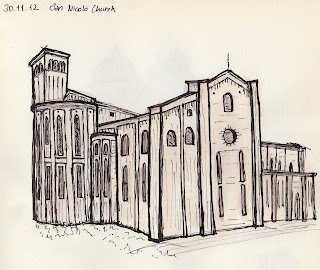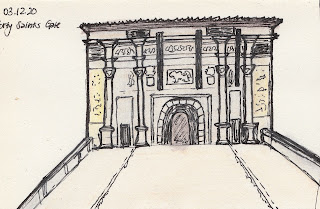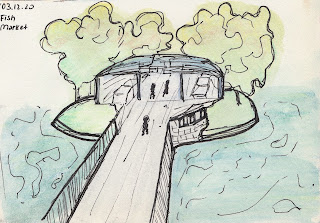City Guide: Treviso, Italy
Everything About Treviso
Treviso locates on the northeast of Italy in the Veneto region. Current population for 2020 is about 85.000. This historical city which has a foundation goes back to Bronze age is partly surrounded by Sile river on the south, hence Botteniga river passes through the town branching into canals. Also, Treviso is famous with Prosecco wine and radicchio, and is thought to be the origin of Tiramisu.
History
Origins of Treviso dates back to 15th Century BC. The town was first belonged to Veneti, then Romans. In 1164 when the Emperor Frederick I announced it as free district, it can be said that the city reached its magnificent era. New churches and structures built, feast of poets were arranged, moreover it was simply Paris of those times for lovers. These gave the city another name which is “Joyous and harmonious March”.
After the participation to Venice military in 1389, the city did not only gain peace but also it adapted the Venetian Gothic Style.
The walls and gates are extend back a long time when Venice decided that the fortification is necessary in beginning of 16th century.
When Treviso defeated to Napoleons armies in 18th century, it got involved in Austria land. Luckily, it liberated by Kingdom of Italy after. However; in WW2 city demolished by American attacks which caused lost of many lives and historical properties.
Landmarks
1. San Nicolo Church (Chiesa Di San Nicolò)
San Nicolo Church which is located in south-west of the historic center is the largest building in Treviso when it is compared to other religious structures in the town. This area was mostly devastated during WW2 times resulted in collapse of the roof and a part of bell tower. In 19th century, this large Dominican church restored thanks to heritage funds.
The building shows layers of Romanesque to Gothic style and hosts great frescoes (figure portraits) from famous painters such as Tomaso da Modena.
2. Treviso Cathedral (Duomo di Treviso, The cathedral of San Pietro Apostolo)
Taking place in the Piazza del Duomo, Treviso Cathedral aka The cathedral of San Pietro Apostolo can be indicated as the main church in the city.
Fundamentals of the church is known to exist in 6th century functioning as a temple theatre and baths complex. the building altered in 11-12th century with a Romaesque style, however due to damages in 1768, some parts were reconstructed with Neoclassical style. The facade that is seen today is from 19th century and has wide staircases from three sides with six ionic columns like iconic Greek ones.
Treviso Cathedral involves a memorable places inside such as Immaculate Conception fresco, the crypt, Malchiostro Chapel, sculptures and paintings.
The bell tower of the building is not completed because Venetians did not allow it to be taller than St. Mark’s Basilica.
3. Saint Francis Church (Chiesa di San Francesco)
The catholic church of San Francesco was built when Romanesque era was terminating and Gothic was started to flourish in the city resulting in the mix of both in the architecture.
When the Napoleon's army take over the city, churches converted into military bases and storage area. In this way interiors of the buildings suffered from damage and robbery.
The restoration could only be done when the church got back its original function in 20th century.
The building contains the tomb of Dante Aligheri’s sons.
Santa Lucia and San Vito medieval churches which locates in Piazza san Vito are adjacent to each other. Although they are divided by a wall, there is a connection with a door between them.
St. Lucy church was constructed in 14th century after the huge fire on the place of destructed jails. Inside, it is possible to see some beauties such as frescoes ("Storie della passione" (Tales of the Passion), "Madonna del pavegio" (Madonna with butterfly)).
St. Vito church has very old history with another functions like hostel, hospital complex etc. It is known that inside there are frescoes that proves the old history of Treviso. The tower bell was added in a renovation in 16th century.
5. The Museum of St. Catherine (Complesso di Santa Caterina, Museo Civico di Santa Caterina)
The museum of St. Catherine which is the main part of Treviso Civic Museums was completed in 14th century.
It involves historical entities such as "Storie di St. Orsola” (Tales of St. Ursula) and other frescoes by Tomaso da Modena.
When the French army took over, it also became a base for military just like St. Francis Church.
For the complex which is next to the St. Catherine Church tickets are 6 euros full and 4 euros reduced while it can be visited for free by under 18 and disabled people.
6. Town Museum “L. Bailo” (Il Museo Luigi Bailo)
Luigi Bailo Museum which is located near the town library has Archelogical Part and a Modern Art Gallery.
Inside it has many art works such as paintings like Crocefisso by Giovanni da Bologna, reflecting views from historical Treviso, ancient tools from different eras, Salce’s Collection.
The museum is closed due to restorations and the exhibition is moved to St. Catherine Museum partly.
Carraresi’s House is in the center of the town by two rivers and hosts meetings and exhibitions, however this Romanesque medieval palace was once functioned as a service area by the travelers.
The building comes forward with unique five arches that faces the river on the one side and the facade that is looking towards the Pescheria (Fish Market) on the other side.
Contrary to expectations, this building was not used as a house, it was only demanded and used by Carraresi for a while.
The most famous square in Treviso aka Piazza dei Signori (Lord’s Square) involves Palazzo del Podesta with the civic tower, Palazzo dei Trecento, Palazzo Pretorio, Municipal Library and Gallery with many sculptures of Lions of San Marco.
As an interesting fact, this beautiful piazza was once were the public humiliation took place.
9. Canals and Watermills of Treviso
When the Treviso is mentioned, the first thing that comes to mind is certainly the canals. In this way, the town is compared to Venice by the visitors.
Because the river is in flow, it is beneficial for the use of mills. The canals were giving life to agricultural life in the city with the help of mills which can still be seen today.
Walking along the Sile river sure clears one’s mind without knowing once there were people who were washing clothes in the exact same place they stand.
10. Saint Thomas Gate (Porta San Tommaso)
The very famous Saint Thomas Gate is one of the three doors that opens to Treviso city. Gate is ornamented with various figures. It was built in 16th century being planned by Paolo Nani and although it was part of the transportation network via light-rail, in 2011 it pedestrianized due to renovation acts.
Sculpture on top symbolizes St. Paul, however the gate itself was dedicated to St. Thomas.
11. Forty Saints Gate (Porta Santi Quaranta)
Forty Saints Gate is the second door that guards the Treviso by limiting the direct access. On its surface it is hardly seen that there is the winged lion symbol of Venice accompanying some other figures.
12. Altinia Gate (Porta Altinia)
The third door which is connected to medieval walls opens to the town from south side. It locates next to St. Marco Castle and engages with the building by stairs. It also functioned as key points of the fortification in the war times. Former frescoes inside the structure is damaged during conflicts.
13. The walls of Treviso (Le Mura Di Treviso)
The walls of Treviso is left from the Roman period with the aim of fortification and formed the historical city. The access was through the 3 gates that were keeping the town safe from enemies.
14. The Buranelli Canal (Canale Buranelli, Medio Canal)
Buranelli Canal is one of the three branches of Botteniga River and the others are Cagnan Grande and Cagnan della Roggia (Siletto). It passes across the city and carries the reflections of many medieval buildings.
15. Giacomelli Palace (Palazzo Dolfin, Calzavara, Giacomelli)
Locating in Garibaldi square, Palazzo Dolfin is a noteworthy architectural heritage which built in 17-18th centuries by command of Salvatore Orsetti.
The owner of the house changed many times resulting in the modification of its name according to the families. It hosts parties, art events and concerts nowadays.
The Fish Market locates in a distinctive area in the center surrounded by the Cagnan Canal. Pescheria island become the place of the market in 19th century. Market is open everyday except Sunday and Monday.
17. The Fountain of Tits (Fontana Delle Tette)
The Fountain of Tits is a very interesting sculpture which demonstrates a braided hair woman to squeeze her breast to splash water (in the times of Venetian celebrations, it was also wine that has been splashed). Built in 16th century, the statue symbolized the time of water scarcity that impacted the whole town and was displayed inside Praetorion Palace in Via Calmaggiore. In fall, marble fountain was poured wine in honor of the rulers for three days without any charge so that local people can enjoy.
18. Lodge of Knights (Loggia Dei Cavalieri)
Lodge of Knights which is Romanesque building with five arches locates at the heart of Treviso and was hosting meetings, conferences, games and knights in 13th century. The structure served for several purposes such as residential, storage for different materials, coffin market, bookshop etc. which caused it to be demolished in time. It could be renovated in 20th century.
Eat&Drink
Apart from the historical side, Treviso has reputation for its famous products to be experienced.
Some native special dishes and food are soap coada (pigeon soup with bread), risotto with asparagus, risotto al radicchio, spaghetti with duck, risi e bisi (rice with peas) and pasta e fagioli (pasta with beans), baked goose, snail stew, mushrooms, cheeses and many more to discover. It is also known that the originals of tiramisu is based on Treviso, so it would worth to try here.
As a drink, Prosecco wine is quite famous and served in every restaurant in the town.
- https://www.archdaily.com/
- https://ahistoricalhiatus.com/
- https://www.atlasobscura.com/
- https://www.britannica.com/
- https://www.cittameridiane.it/
- https://www.coopculture.it/
- https://en.wikipedia.org/
- https://www.italianways.com/
- https://www.lonelyplanet.com/
- https://www.planetware.com/
- https://populationstat.com/
- https://www.thecrazytourist.com/
- https://www.travelplan.it/
- https://www.trevisoinfo.com/
- https://www.venetoway.com/
- https://visittreviso.it/

















Comments
Post a Comment